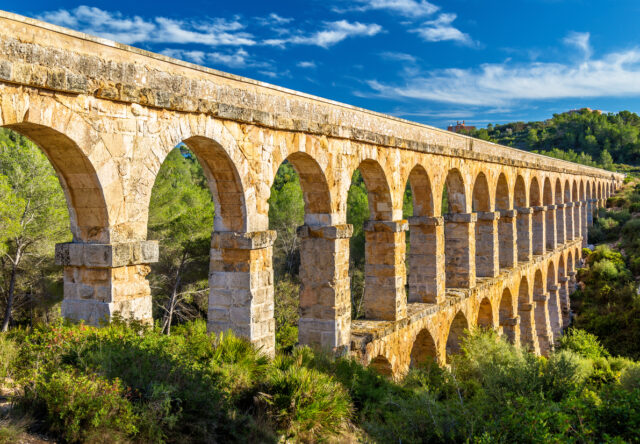By David Jenkins
History, it is often said, frequently repeats and contains lessons for today, and that also applies in our world of asset management.
One of our common themes at IPWEA is the need for accountants and engineers to understand each other’s roles and work together, and it appears that this is an issue which even the ancients were grappling with.
A contact recently sent me some material on public works in the Roman Empire during the reign of the Emperor Trajan, and some of their problems with infrastructure projects ring very true today and are worth revisiting.
Trajan’s correspondent was the Roman historian and administrator Pliny the Younger, who had been posted to Asia Minor – modern day Turkey – and was having trouble managing some large projects.
At the city of Nicomedia, for example, the citizens had spent 3.3 million sesterces – around $2.5 million according to some conversions – on an aqueduct which they had abandoned before it was finished. It was then demolished.
A grant of 200,000 sesterces was made to another aqueduct, but this was also abandoned.
Pliny tells the Emperor that there is a solution and that he can salvage the project.
He has inspected the water spring and says the original plan has the advantage of supplying water to the whole city, and not just the low lying areas. Equity of access was clearly important, even in Roman times.
Some of the arches which are still standing could still be used, and stone taken from the earlier construction can be repurposed. To save costs and time, bricks could be used for the other arches.
The most pressing issue, says Pliny, is for the Emperor to send him an engineer or an architect whose expertise could prevent a third failure.
After dealing with the practicalities, Pliny assures Trajan that if the project is complete it will “combine utility with beauty, and will be well worthy of your reign.” Many of today’s politicians and elected officials will identify with that.
In reply, Trajan endorses the plan but exhorts Pliny to find out who is to blame for wasting the money. He is concerned about corruption, and concerned that “people have profited by this starting and abandoning of aqueducts.”
The water infrastructure at Nicomedia is not the only public works project in the correspondence.
At another city, Nicea, a theatre is only half built and more than ten million sesterces has been spent and is feared wasted.
The building is sinking and showing cracks, possibly because it is sited in damp soil.
Private citizens are keen to make decorative additions to the theatre so a lot is at stake.
Pliny is struggling with the challenge of a building which may need to be demolished for structural reasons as he balances the pressures and expectations of the citizens.
Meanwhile, there is a political furore over a new gymnasium, which has been rebuilt at great expense after a fire.
Despite all the money invested the building is “badly planned and too scattered” and there seems to be a feud between the city architects, with one claiming his rival has created a building where the superstructure cannot support the walls.
Pliny then faces a decision which resonates with many asset managers today.
He needs to make a call on whether there are enough funds to complete both the theatre in Nicea and another struggling project, a bath house in Claudiopolis.
Because of the wastage of funds at Nicea, there may only be enough money for one project.
At this point, Pliny wants to call in the experts for their opinion and pleads with Trajan to send an architect to inspect both projects.
The architect, he hopes, will know if they can “keep to the original plans and finish both buildings as best we can, or to make any necessary alterations and changes of site so that we do not throw away more money in an attempt to make some use of the original outlay.”
These dilemmas resonate with the challenges we face today, and show that while the Romans were renowned as builders and engineers they also had their issues in asset management.
Having engineers and accountants on site, working closely on the projects together would likely have delivered much better results and with fewer headaches.
Clearly that was true in ancient Rome, just as it is today.














